
Have you ever written content for your blog and thought “this is the best content I’ve ever written?”
You publish it, promote it on social media and send an email to your audience. And people seem to love it initially; but after the first day or two of attention... nothing.
How can this be?
The answer is pretty simple, your post was never optimized for organic search.
You’re not alone. We had a blog post “Here's How Email Color Can Impact Subscriber Behavior” that fell into this category - amazing content, no traffic.
Here were sessions from Google Analytics for the past couple of years for this blog post.

When I dug a little deeper, I noticed that we weren’t targeting any keywords that people actually search for. No one is searching for “how email color impacts subscriber behavior.”
When I performed keyword research in ahrefs, these were the top results for “email” and “color”:
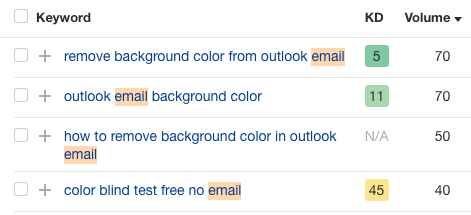
So how did I take a blog post that had zero organic traffic dating back to its launch in 2016...

And turn it into a post that is seeing four straight months of organic traffic growth?

I optimized the content based on keywords people were searching for. Here was my process for optimizing this specific blog post for SEO.
1 - It all starts with keyword research
I use ahrefs for my research but there are several other tools you can use like Semrush or Moz.
The blog was about how color can have an impact on subscriber or consumer behavior so I started with a general search term of “color”.
Then I narrowed my search by including words that could be relevant to this blog. So I included the words “behavior” and “marketing”. My thought was “email” was too specific but general words like “behavior” and “marketing” might show some organic keyword phrases to target.
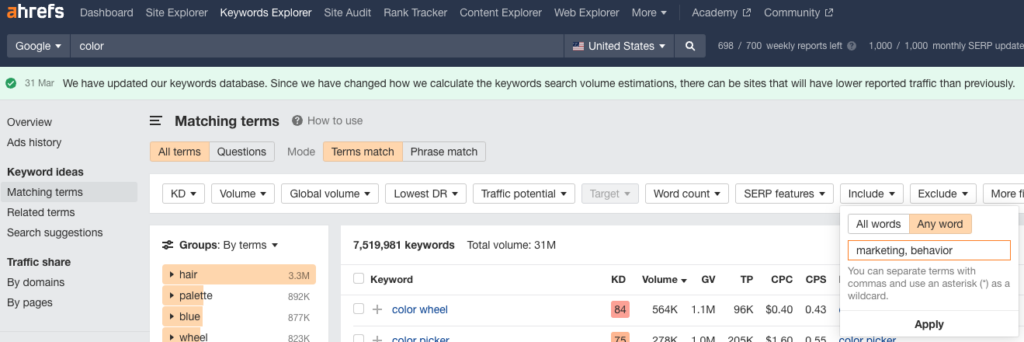
The top results showed that people are searching for terms revolving around “psychology of color in marketing.”
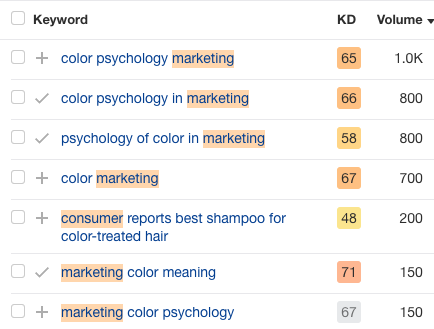
So I decided to optimize the blog around that term.
2 - Internal research
Now that I had my topic, I wanted to see if we had any other blog posts talking about color. The reason for the internal research is because you don’t want to optimize a post on a topic that has already been written in your blog. Those two blog posts would then be competing against each other for your target keywords.
I used Google Search Console to look for search queries that contained the word “color” to see if there were any blog posts getting organic traffic for a similar subject matter.
My research found a blog written in 2017 with the title “Color Theory for Sign Up Form Design”. This content was very similar to the content I was optimizing except it was talking about how color can impact a sign up form.

Next I wanted to see if this blog warranted its own post or could I combine it with my new blog. I looked at the clicks from Google Search Console over the past 12 months. The data showed only 45 people clicked a search query to get this blog post.
Next I looked at sessions from all channels in Google Analytics. And the past four months showed organic traffic. Even prior to that we only averaged 50 sessions a month.

The organic traffic was so low, it did not warrant keeping it as its own post.
So I decided this additional content would make my new blog post even stronger, so I added this content to my new blog.
3 - Reposition the blog content
I loved the content from the original blog “Here’s How Email Color Can Impact Subscriber Behavior” but that was very specific to email marketing. I wanted to keep this content, but knew as is, it wasn’t going to drive any organic traffic.
So I decided to reposition the blog to talk about the psychology of color in marketing. Here’s how I did that:
New title
Created a new title “How to use the psychology of color in marketing to increase your results” to describe what the blog was about.

New optimize content
Added new content, including studies, about how color influences behavior in marketing.
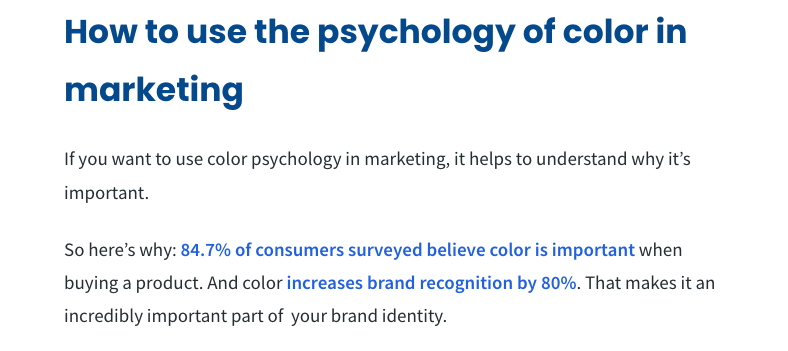
In the content I also made sure I naturally included keywords I wanted to rank for including “psychology of color in marketing” and “marketing color meaning”.
Added images
Included charts to highlight the different color meanings, my thought here was that I could also rank with the images (which I was right, some of my organic traffic is coming from people clicking on the images in the search results)
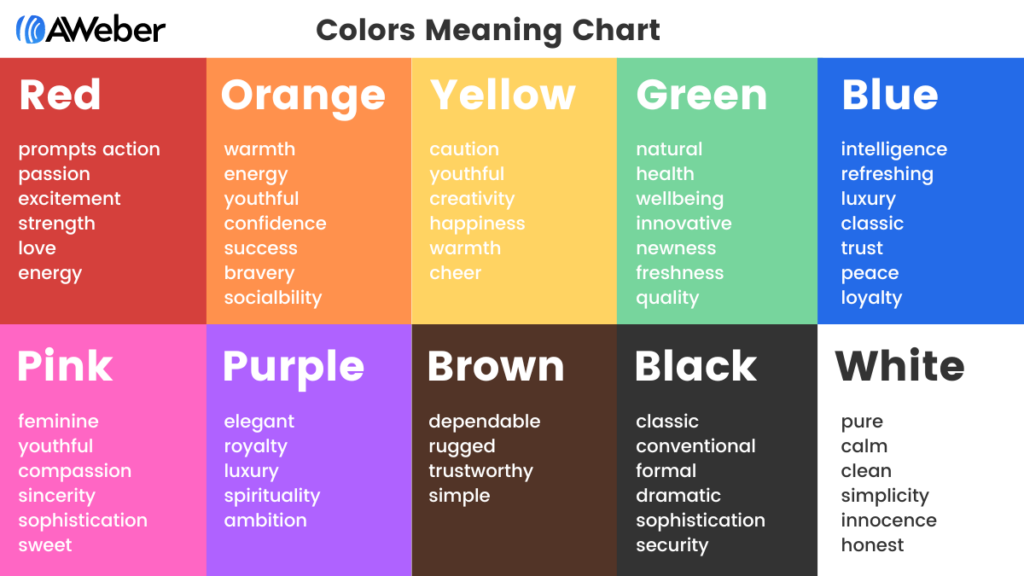
Transitioned to prior content
After highlighting how specific colors can influence consumer behavior, I transitioned into how this can be applied to both sign up forms and email marketing. This is where I added the content from the original two blog posts.
New URL with redirect
Finally, since the original blogs URL’s were about how sign up form (/color-theory-for-sign-up-form-design) and email (/how-email-color-impacts-subscriber-behavior) color impacts subscriber behavior, I created a new URL (/how-to-use-the-psychology-of-color-in-marketing.htm) and I redirected the other two URL's to the new one.
Optimize your blog for SEO
Since I used content that was already created, I only needed to write about 40% of this 2,500+ word post.
Now it’s your turn. Find a blog that is simply an amazing piece of content, but for some reason is just not driving organic traffic. Do research and find keywords that you could incorporate that would give this post a chance to get organic traffic.
To give yourself a better chance to rank high for several keywords, I recommend you search for keywords that have a keyword difficulty under 40. These are less competitive and will give you a better chance to rank quicker.
Bonus: How to optimize a blog that’s already getting strong traffic
I just shared with you my process for optimizing my content for SEO on a blog that had zero sessions over the past several years.
But can you and should you optimize a blog post that’s already getting strong organic traffic. The answer is absolutely.
I optimized this blog post - blog.aweber.com/learn/how-to-get-email-addresses - that had 3,242 organic visitors over the previous 12 months and was ranking in the top 20 for several strategic keywords. That’s over 270 organic visitors per month from this one blog.
After a few simple updates to this blog, my organic traffic has increased almost 3x. Since this blog was optimized, organic traffic from this post has increased to 861 organic visitors a month.
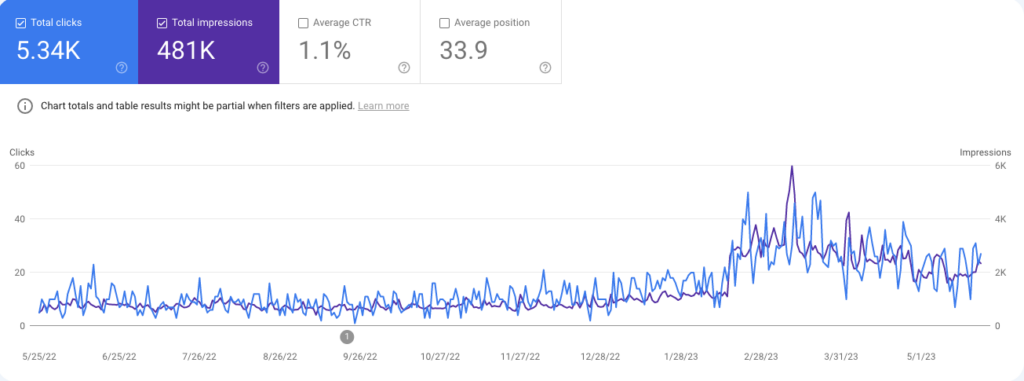
Chart from Google Search Console
And I’m ranking higher for several targeted keywords:
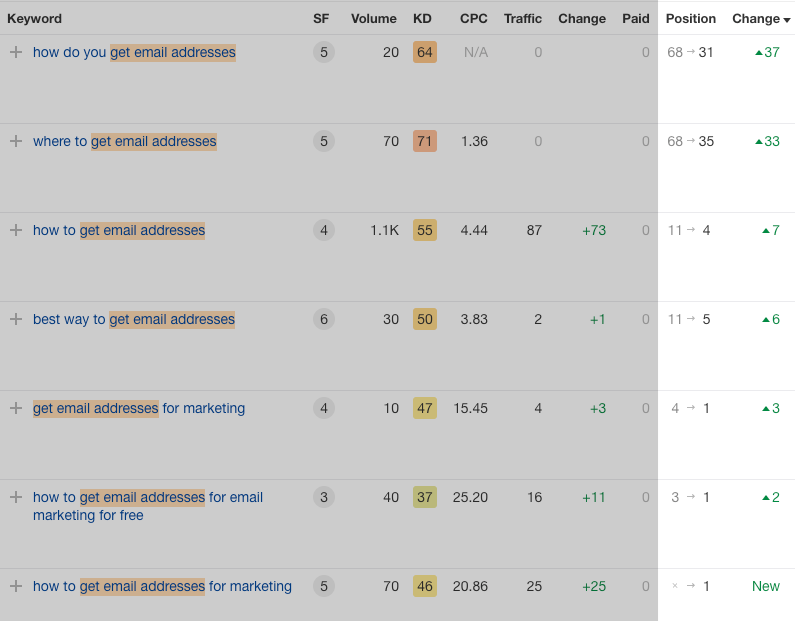
Here are my tips that I used to optimize my content, which improved my SEO.
1 - Updated old and non-relevant content
This blog post, believe it or not, was written back in 2010. I optimized it in 2020 and again in 2023. A lot has changed in email marketing in the last 13+ years.
I updated content that was outdated or no longer relevant.
Here’s some things you should check for when optimizing your content:
- Depending on your topic, a lot can change in a year, so make sure your content is still fresh and relevant.
- Are you referencing a year or information that is dated? For example, if your blog is referring to MySpace as the hottest social media platform, it might be time to update it.
- Check all your links. If any of the internal or external links are being redirected, change them. If the content you’re linking to is several years old, find a more recent article to link to.
Bonus tips: You should optimize your strongest content every 2 - 3 years to ensure the content is still hitting those organic triggers.
2 - Updated the title
Updating your blog title might not be necessary, but I felt my title needed something strong to compete with blogs that were ranking in the top 10.
My original title was “How to get email addresses for email marketing”. I use HeadlineStudio to score and help validate my title ideas. For the original title, the headline score was 58, which is an average score.

The new title scored an 82. This gave me more confidence that the new headline might resonate better with people searching for “ways to get email addresses for marketing”.

3 - Add new content
The blog had 17 “ways to get email addresses”, I added three new tips.
When you’re updating an already SEO friendly content, you don’t want to dramatically change the language that got you that strong ranking. But you also don’t want to add “fluff” content, it still needs to be strong, relevant, and add value to the reader.
Help the SEO algorithms
Give your content a strong chance to rank. When you publish your content, promote it to your audience. This will give search engines some early data to determine if your content is worthy of a top SERP.
So email your audience and add to your social channels. You want to get people reading and engaging with your content as soon as possible.
You can use Blog Automation to instantly notify your audience the minute you publish a new blog post. No additional work is needed on your part. Just sit back, relax, and watch as your audience starts viewing your latest, amazing blog post.
Blog Automation is a feature in your AWeber account.
Don’t have an AWeber account - no problem. You can create one for free.
The post Optimize your blog post for SEO & go from zero traffic to monthly growth appeared first on AWeber.
from AWeber https://ift.tt/npiPetG
via IFTTT
No comments:
Post a Comment